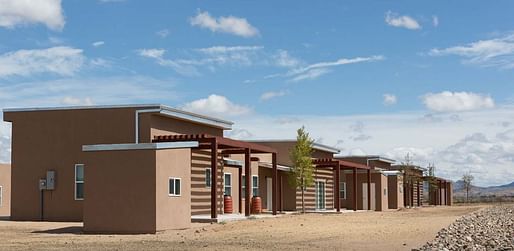

The U.S. Department of Housing and Urban Development (HUD) has announced over $90 million in grants allocated for affordable housing in Tribal communities. The funds, distributed to 24 Tribes and Tribally Designated Housing Entities (TDHEs) are intended to support the construction of new houses, the rehabilitation of existing housing, and the delivery of vital infrastructural projects.
Awarded as part of HUD’s Indian Housing Block Grant (IHBG), the funds are expected to support the construction of approximately 350 housing units. Commenting on the funding, HUD Secretary Marcia L. Fudge said “this past year was a stark reminder of just how important access to safe, stable housing is — especially in Tribal communities disproportionately impacted by the COVID-19 pandemic. The funding HUD is awarding today will support much needed affordable housing investments in Indian Country.”
The new funding, along with the broader IHBG program, is not without reason. Successive reports by both HUD and organizations concerned with the issue have found that Tribal communities suffer from some of the worst housing conditions in the United States. In 2017, HUD estimated that 16% of reservations were overcrowded compared to the national average of 2.2%, with 17% of households hosting a guest only because they had nowhere else to live.
While the recent money announced by HUD may provide 350 homes for Native lands, the department has estimated that 68,000 housing units are needed to replace existing inadequate homes and eliminate overcrowding in Tribal areas. For context, this figure is similar in scale to the number of houses called for in New York’s 10-year housing plan. Despite this, funding from the IHBG enables the construction of only 1,000 homes per year, due to a real-time decline in its budget since its introduction in 1996.
This long-running crisis has served to worsen the impact of COVID-19 on Native communities. Writing for Archinect in July 2020, MASS Design Group director Joseph Kunkel, also a Northern Cheyenne Nation citizen, explained that overcrowding in Native communities has reduced the ability for people to social distance during the pandemic. This has only magnified the impact of the pandemic on communities already disproportionately affected by underlying conditions linked to COVID deaths, such as heart disease and diabetes. While the federal government earmarked $300 million for Tribal housing programs during the March 2020 stimulus package, these figures remain inadequate to address the housing crisis at-scale.
Within the chronic housing crisis facing Tribal communities, there is an opportunity to design and construct homes that reflect the values and culture of these communities, while adhering to principles of green, sustainable living. A 2016 study by the U.S. Department of Energy’s “Tribal Energy Program Review” put forward a vision of Tribal housing that encompassed five sustainable design strategies: site, water, energy, materials, and the indoor environment; using architecture and design as vehicles to address the current lack of reliable plumbing and electricity supply in Native housing.
Meanwhile, Kunkel’s article for the Aspen Institute in June 2020 points to a case study in Tacoma, Washington where native-led designers 7 DIRECTIONS Architects/Planners and Environmental Works partnered with the Puyallup Nation Housing Authority to deliver a 20-unit affordable Tribal housing complex, merging LEED Platinum certification with traditional American Indian design elements. While the additional $90 million newly allocated by HUD is a fraction of the funding needed to address this national crisis, it is nonetheless a step towards realizing the vision of architects like Kunkel: “Together as a nation, as Native and non-native peoples, we need to create models that aren’t just a quick fix, but a sustainable, long-term solution that will help us as a collective society weather the storm now and for many generations to come.”
1 Comment
After a few years of living in Prescott, Arizona, it is clear that the tribal lands have a few economically profitable locations. If HUD works toward removing colloquial problems with infrastructure, it can help the tribes stay financially prosperous, or, develop college education plans for future integration or tribal development. Perhaps community centers can help connect students to valuable assets and digital infrastructure.
Block this user
Are you sure you want to block this user and hide all related comments throughout the site?
Archinect
This is your first comment on Archinect. Your comment will be visible once approved.